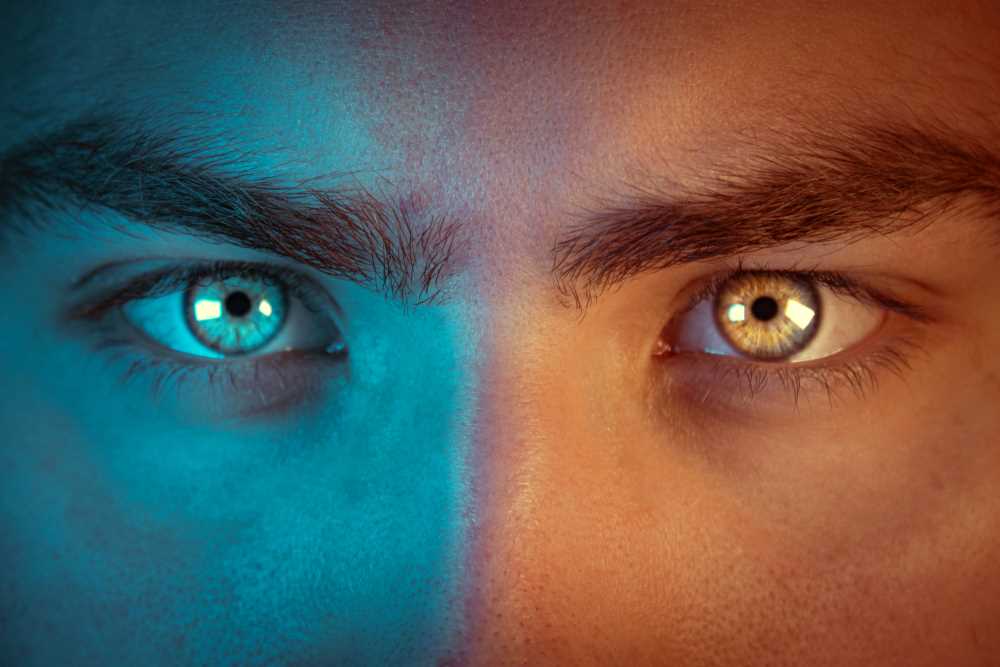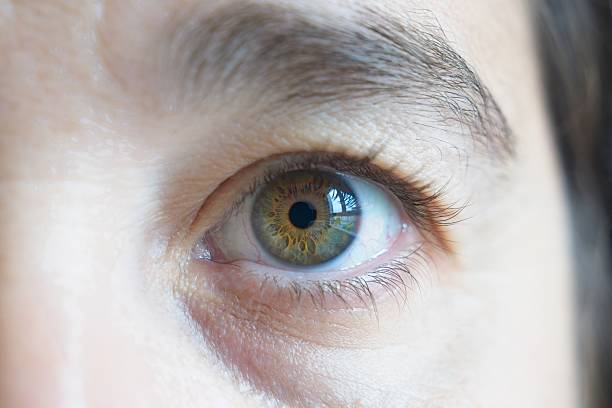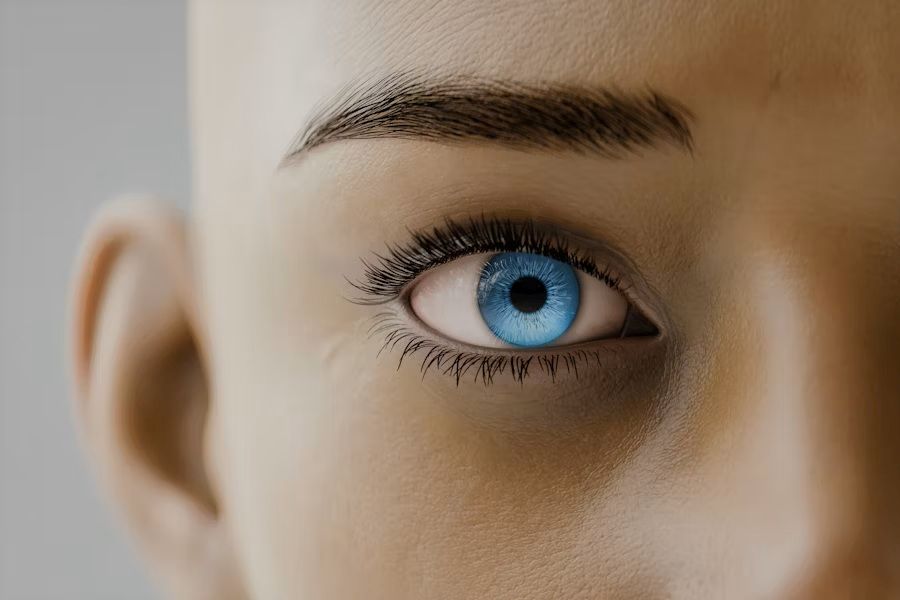Your Cart is Empty
Can Your Eyes Really Be Two Different Colors? The Truth About Heterochromia

In the vast spectrum of human diversity, few traits capture our imagination quite like heterochromia. This rare and striking condition, where an individual's eyes display different colors, has long been a source of fascination, myth, and scientific inquiry. From the piercing gaze of actors like Kate Bosworth to the enchanting eyes of certain dog breeds, heterochromia continues to captivate our attention and spark our curiosity.
Understanding Heterochromia
Derived from the Greek words "heteros" (different) and "chroma" (color), heterochromia iridis refers to a difference in coloration of the iris, the colored part of the eye. This condition can manifest in several ways:
1. Complete Heterochromia: Each eye is a distinctly different color (e.g., one blue eye and one brown eye).
2. Partial Heterochromia: Different colors appear in the same iris, often with a splash or segment of another color.
3. Central Heterochromia: The inner ring of the iris is a different color from the outer ring.
Dr. Elena Rodriguez, a leading ophthalmologist, explains, "Heterochromia is more than just an aesthetic curiosity. It can provide valuable insights into eye development and even help diagnose certain medical conditions."
The Science Behind the Colors
To understand heterochromia, we must first grasp the basics of eye color. The iris contains pigment-producing cells called melanocytes. The amount and type of melanin these cells produce determine eye color:
- Brown eyes: High amounts of melanin
- Blue eyes: Little melanin, with color resulting from light scattering
- Green and hazel eyes: Moderate amounts of melanin, combined with light scattering
Heterochromia occurs when melanocytes produce different amounts or types of melanin in each eye or in different parts of the same iris. This can happen due to various factors:
1. Genetic Mutations: Changes in genes responsible for melanin production or distribution can lead to heterochromia.
2. Chimerism: A rare condition where an individual has DNA from two different zygotes, potentially resulting in different eye colors.
3. Injury or Illness: Trauma or certain diseases can alter iris coloration.
4. Medication Side Effects: Some medications, particularly those for glaucoma, can change eye color.
5. Developmental Anomalies: Issues during eye development can result in heterochromia.
Types of Heterochromia
Heterochromia can be classified into three main categories:
1. Congenital Heterochromia: Present from birth, often genetic in origin.
2. Acquired Heterochromia: Develops later in life due to injury, disease, or medication.
3. Waardenburg Syndrome: A genetic condition that can cause heterochromia along with other distinctive features.
Dr. Sarah Thompson, a geneticist specializing in eye disorders, notes, "While most cases of heterochromia are benign and don't affect vision, they can sometimes be indicators of underlying conditions. It's always wise to have any significant differences in eye color evaluated by a professional."
Capturing the Beauty: The Rise of Heterochromia Photography
In recent years, the ubiquity of high-quality smartphone cameras has given rise to a fascinating trend in eye photography, with a particular focus on capturing the unique beauty of heterochromia. Social media platforms are awash with striking close-ups of mismatched eyes, celebrating this rare genetic quirk.
John Davies, a digital artist specializing in iris photography, shares his insight: "Heterochromia presents a unique opportunity for captivating imagery. The contrast between colors in a single frame can be truly mesmerizing. With today's smartphone cameras, anyone can capture these incredible details."
For those interested in photographing heterochromia, whether their own eyes or someone else's, here are some tips:
1. Use Natural Light: Position the subject near a window for soft, even lighting that brings out the iris details.
2. Macro Lens Attachments: Consider using a clip-on macro lens for your smartphone to capture extreme close-ups.
3. Focus on the Eyes: Use your phone's touch-focus feature to ensure the iris is sharp.
4. Steady Your Shot: Use a tripod or steady surface to avoid blur in close-up shots.
5. Edit Carefully: Enhance colors and contrast, but avoid over-editing that might misrepresent the true appearance of the heterochromia.
6. Multiple Angles: Capture both eyes individually and together to showcase the color difference.
Remember, while photographing heterochromia can be exciting, always prioritize eye safety and comfort during the process.
Heterochromia in Popular Culture and History
Throughout history, heterochromia has been viewed with a mixture of fascination, superstition, and sometimes even fear. Different cultures have attributed various meanings to this condition:
- Ancient Greece: Some believed heterochromia was a mark of the gods, bestowing divine favor.
- Eastern European Folklore: Mismatched eyes were sometimes associated with the "evil eye" or magical abilities.
- Native American Traditions: Certain tribes viewed heterochromia as a sign of strong spiritual connection.
In modern popular culture, heterochromia has been featured prominently:
- Celebrities: Actors like Kate Bosworth, Mila Kunis, and Christopher Walken have made their heterochromia a distinctive part of their image.
- Fashion: The unique look of heterochromia has inspired trends in contact lenses and makeup.
- Literature and Film: Characters with mismatched eyes often possess special powers or significance in storylines.
Dr. Michael Lee, a cultural anthropologist, observes, "The enduring fascination with heterochromia reflects our human tendency to find meaning and significance in unique physical traits. It's a reminder of the diversity and unpredictability of nature."
The Medical Significance of Heterochromia
While many cases of heterochromia are benign and purely aesthetic, the condition can sometimes be an indicator of underlying health issues:
1. Horner's Syndrome: A neurological condition that can cause heterochromia along with other symptoms.
2. Sturge-Weber Syndrome: A rare disorder affecting blood vessels in the brain, skin, and eyes.
3. Iris Melanoma: In rare cases, a change in eye color could be a sign of this serious condition.
4. Fuchs Heterochromic Iridocyclitis: An inflammatory eye condition that can cause heterochromia.
Dr. Emma Richardson, an ophthalmologist, emphasizes, "Any sudden change in eye color should be evaluated by an eye care professional. While often harmless, it's important to rule out potential health concerns."
Genetic Insights and Future Research
The study of heterochromia has provided valuable insights into the genetics of eye color and development. Researchers have identified several genes involved in iris coloration, including OCA2, HERC2, and SLC24A4.
Current and future research directions include:
1. Gene Therapy: Exploring potential treatments for certain types of heterochromia and related conditions.
2. Evolutionary Biology: Studying the prevalence and significance of heterochromia across different populations.
3. Developmental Biology: Investigating the precise mechanisms of iris color determination during fetal development.
4. Biomedical Applications: Using insights from heterochromia research to develop new treatments for eye disorders.
Living with Heterochromia
For individuals with heterochromia, the condition can be a source of both distinction and, sometimes, self-consciousness. Many embrace their unique eye colors as a part of their identity, while others may feel uncomfortable with the attention it can draw.
Support groups and online communities have emerged, allowing people with heterochromia to share experiences and celebrate their distinctive trait. These platforms also serve as valuable resources for education and awareness.
Conclusion: Celebrating the Diversity of Human Eyes
Heterochromia stands as a testament to the incredible diversity of human appearance. From its genetic underpinnings to its cultural significance, this condition continues to intrigue scientists, artists, and the general public alike.
As we continue to explore and understand heterochromia, it serves as a reminder of the complexity and beauty of human biology. Whether viewed through the lens of a microscope, a smartphone camera, or simply appreciated in a passing glance, mismatched eyes offer a unique window into the wonders of genetic variation.
In a world that often seeks conformity, heterochromia challenges us to appreciate the exceptional, to find beauty in difference, and to recognize that our distinctive traits – whether visible like eye color or hidden within our genetic code – contribute to the rich tapestry of human diversity.
As we move forward, let us continue to approach heterochromia and other rare traits with curiosity, empathy, and wonder. In doing so, we not only advance our scientific understanding but also foster a more inclusive and appreciative view of the myriad ways in which human beings can be beautifully, captivatingly unique.
Leave a comment
Comments will be approved before showing up.




